Porsche Secretly Built a "Le Mans Hypercar" Concept Last Year, Also a 919 Street
We've dedicated three articles to this initiative, which is dubbed Porsche Unseen (you'll find all of them behind the link) and this is #3 - the other two zoom in on eccentric production model derivatives (think: the Porsche 911 Safari we might get in the showroom) and, of course, the automaker's electric revolution.
Retuning to the Circuit de la Sarthe, which hosts the famous 24 Hours of Le Mans battle, we'll remind you that Porsche has left this stage after the 2017 season (as far as the range-topping LMP1 class is concerned), albeit not before scoring three consecutive victories following its 2014 return. And with the latter having come after a 16-year hiatus, we must ask ourselves: when will the Porsche crest return?
The first concept we have here, namely the Vision 920, shows that the company's designers never left Le Mans.
The Germans had developed a V6 engine destined for F1 in the final part of the last decade, albeit with the project behind abandoned in favor of joining Formula E, a move that came in 2019. However, it was also last year that saw Porsche coming up with the Vision 920 you can check out in the image above.
As its name comes to show, this is basically a successor to the 919 podium domination machine, but there's more to it than that. You see, the LMP1 class is set to be replaced by the Le Mans Hypercar (LMH) tier starting with the 2022 season. And the most important difference between the two is that the latter will see participating carmakers introducing road-going "sister" models for their racecars.
Well, as Porsche explains, the Vision 920 "was designed as a super sports car for the road or as a possible racing car for customer motorsport based on the LMP1 race cars,". So the company was already dreaming of the said homologation specials last year, even though it isn't on the list of carmakers that have expressed their intention to play in the LMH league.
The appearance of the 1:1 scale hard model (this wasn't a functional prototype) shows us the radical end of Porsche's form-follows-function design philosophy. And it's enough to throw a glance at those negative space areas in the lower side of the vehicle or at the exposed pushrod-style suspension of the single-seater to understand that.
While we're talking about the 919, you should know the Evo version, which did away with the LMP1 rules and set an absolute Nurburgring lap record of 5:19.55 in 2018, wasn't the only follow-up. That's because Porsche had built a 1:1 scale clay model of the 919... Street a year before that.
It's not easy to look beyond the amazing way in which the designers adapted the car for road use, but the ingredients that lie underneath the skin do help with that. After all, we're talking about a carbon monocoque and a 900 hp hybrid powertrain.
While the idea of bringing such a Le Mans winner to the road seemed feasible at first, the uber-complex motorsport hardware eventually got in the way of such use - for instance, an entire crew of mechanics needed 45 minutes just to check all the parameters and start the two-liter V4 single-turbo engine integrated into the structure of the vehicle.
Hey, what if, instead of climbing from "919", we try to descend? We run into the 918, of course. And, as Porsche showed by presenting the 917 Living Legend concept last year, the 918 Spyder halo car we can enjoy on the street wasn't the only form of the hybrid hypercar - as early as 2013, the platform of the machine saw the company's designers wrapping it up in this modern-day nod to the iconic 917KH racecar that brought the automaker the first of its 19 Le Mans wins to date back in 1970.
And sure, you could gift the 918 Spyder with the Weissach Package, but the Vision 918 RS that's being showcased now (you'll find this in the image above) has something to tell us: all those Porsche fanatics dreaming about the 918 being taken down the Rennsport route were on to something!
The styling, which evolved into a 1:1 scale hard model in 2019, sits quite far on the evolutionary scale compared to that of the production model.
And that's because the fresh elements, from the super-sized front end to the rear fins and massive diffuser, obviously serve an extreme downforce purpose. As the company explains, the powertrain and chassis had also been updated and while it doesn't mention the level of added aggression, that aero says quite a lot.
"What if the 918 had never existed - was that even a possibility?" we hear you asking. Of course it was and the 906 Living Legend you see above might just help us imagine a world where Porsche had chosen a different successor to the Carrera GT.
Developed right in the middle of the CGT's life cycle (that would be 2005), this 1:1 hard model obviously seeks inspiration in the legendary 906 racer introduced in 1966.
Perhaps the most dramatic design feature of the 906 Living Legend is the gap separating the nose and passenger cell from the area behind the latter, where the motor resides. This obviously brings the much-needed cool air into the engine compartment. Of course, the extremely low nose and the taillight-integrating fins at the back can't be neglected, especially since the latter seem to stretch the limits of the Porsche design DNA.
And you might find some of the features of this concept in the electric cars that are currently changing the way in which we perceive Porsche.
In fact, here's Michael Mauer, the man who has led the carmaker's design team since 2004 (he is only the third chief designer in the history of the brand), explaining the connection: "It is not necessary to keep to pre-defined product identity characteristics. For example, the headlights were positioned in an air intake as a futuristic light source. When we were later developing an identity for our electric models, we took another look at these designs. The radical idea of simply integrating a light source in an opening instead of a glass cover seemed appropriate for us. We are now approaching this ideal,”
As stated in an online media presentation held a couple of hours ago, some of these concepts will be showcased at the Porsche Museum located near to the factory in Stuttgart, Germany, next year, so the die-hard Porschephiles among you can look them in the headlight.
And, if you happen to be one of the lucky visitors, keep in mind that you're just half an hour of driving away from the town of Weissach, where all the design magic discussed above was created.
Retuning to the Circuit de la Sarthe, which hosts the famous 24 Hours of Le Mans battle, we'll remind you that Porsche has left this stage after the 2017 season (as far as the range-topping LMP1 class is concerned), albeit not before scoring three consecutive victories following its 2014 return. And with the latter having come after a 16-year hiatus, we must ask ourselves: when will the Porsche crest return?
The first concept we have here, namely the Vision 920, shows that the company's designers never left Le Mans.
The Germans had developed a V6 engine destined for F1 in the final part of the last decade, albeit with the project behind abandoned in favor of joining Formula E, a move that came in 2019. However, it was also last year that saw Porsche coming up with the Vision 920 you can check out in the image above.
As its name comes to show, this is basically a successor to the 919 podium domination machine, but there's more to it than that. You see, the LMP1 class is set to be replaced by the Le Mans Hypercar (LMH) tier starting with the 2022 season. And the most important difference between the two is that the latter will see participating carmakers introducing road-going "sister" models for their racecars.
Well, as Porsche explains, the Vision 920 "was designed as a super sports car for the road or as a possible racing car for customer motorsport based on the LMP1 race cars,". So the company was already dreaming of the said homologation specials last year, even though it isn't on the list of carmakers that have expressed their intention to play in the LMH league.
The appearance of the 1:1 scale hard model (this wasn't a functional prototype) shows us the radical end of Porsche's form-follows-function design philosophy. And it's enough to throw a glance at those negative space areas in the lower side of the vehicle or at the exposed pushrod-style suspension of the single-seater to understand that.
While we're talking about the 919, you should know the Evo version, which did away with the LMP1 rules and set an absolute Nurburgring lap record of 5:19.55 in 2018, wasn't the only follow-up. That's because Porsche had built a 1:1 scale clay model of the 919... Street a year before that.
It's not easy to look beyond the amazing way in which the designers adapted the car for road use, but the ingredients that lie underneath the skin do help with that. After all, we're talking about a carbon monocoque and a 900 hp hybrid powertrain.
While the idea of bringing such a Le Mans winner to the road seemed feasible at first, the uber-complex motorsport hardware eventually got in the way of such use - for instance, an entire crew of mechanics needed 45 minutes just to check all the parameters and start the two-liter V4 single-turbo engine integrated into the structure of the vehicle.
Hey, what if, instead of climbing from "919", we try to descend? We run into the 918, of course. And, as Porsche showed by presenting the 917 Living Legend concept last year, the 918 Spyder halo car we can enjoy on the street wasn't the only form of the hybrid hypercar - as early as 2013, the platform of the machine saw the company's designers wrapping it up in this modern-day nod to the iconic 917KH racecar that brought the automaker the first of its 19 Le Mans wins to date back in 1970.
And sure, you could gift the 918 Spyder with the Weissach Package, but the Vision 918 RS that's being showcased now (you'll find this in the image above) has something to tell us: all those Porsche fanatics dreaming about the 918 being taken down the Rennsport route were on to something!
The styling, which evolved into a 1:1 scale hard model in 2019, sits quite far on the evolutionary scale compared to that of the production model.
And that's because the fresh elements, from the super-sized front end to the rear fins and massive diffuser, obviously serve an extreme downforce purpose. As the company explains, the powertrain and chassis had also been updated and while it doesn't mention the level of added aggression, that aero says quite a lot.
"What if the 918 had never existed - was that even a possibility?" we hear you asking. Of course it was and the 906 Living Legend you see above might just help us imagine a world where Porsche had chosen a different successor to the Carrera GT.
Developed right in the middle of the CGT's life cycle (that would be 2005), this 1:1 hard model obviously seeks inspiration in the legendary 906 racer introduced in 1966.
Perhaps the most dramatic design feature of the 906 Living Legend is the gap separating the nose and passenger cell from the area behind the latter, where the motor resides. This obviously brings the much-needed cool air into the engine compartment. Of course, the extremely low nose and the taillight-integrating fins at the back can't be neglected, especially since the latter seem to stretch the limits of the Porsche design DNA.
And you might find some of the features of this concept in the electric cars that are currently changing the way in which we perceive Porsche.
In fact, here's Michael Mauer, the man who has led the carmaker's design team since 2004 (he is only the third chief designer in the history of the brand), explaining the connection: "It is not necessary to keep to pre-defined product identity characteristics. For example, the headlights were positioned in an air intake as a futuristic light source. When we were later developing an identity for our electric models, we took another look at these designs. The radical idea of simply integrating a light source in an opening instead of a glass cover seemed appropriate for us. We are now approaching this ideal,”
As stated in an online media presentation held a couple of hours ago, some of these concepts will be showcased at the Porsche Museum located near to the factory in Stuttgart, Germany, next year, so the die-hard Porschephiles among you can look them in the headlight.
And, if you happen to be one of the lucky visitors, keep in mind that you're just half an hour of driving away from the town of Weissach, where all the design magic discussed above was created.











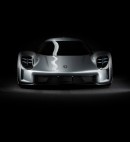
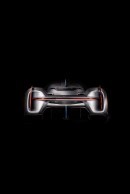

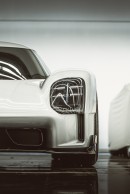


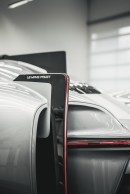
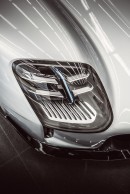
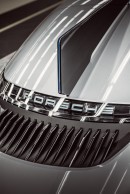
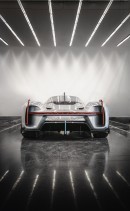
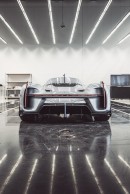
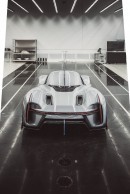



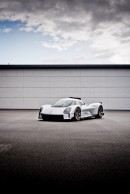







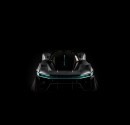




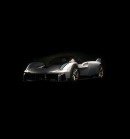



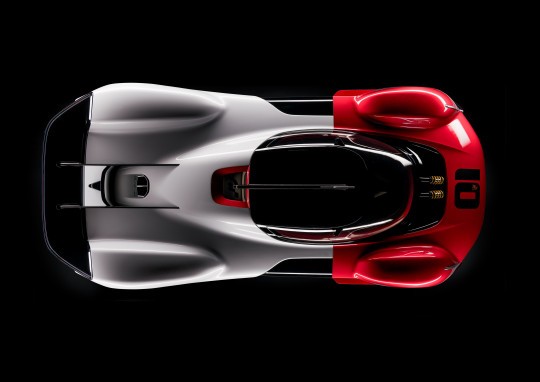


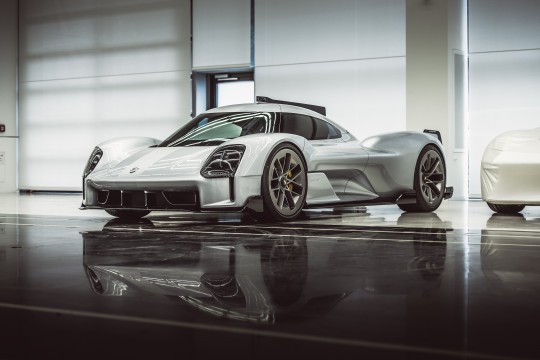
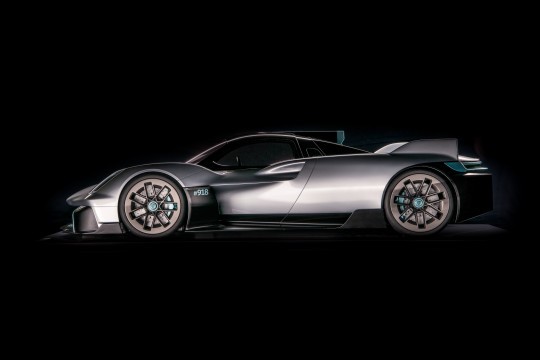
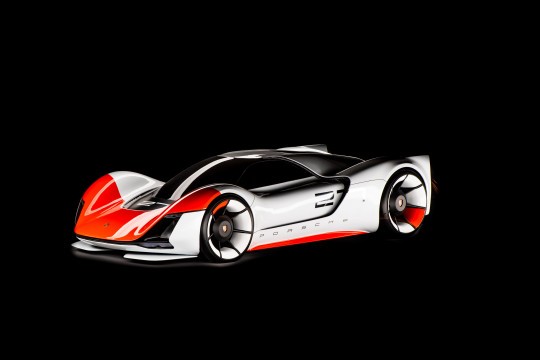
No comments:
Post a Comment